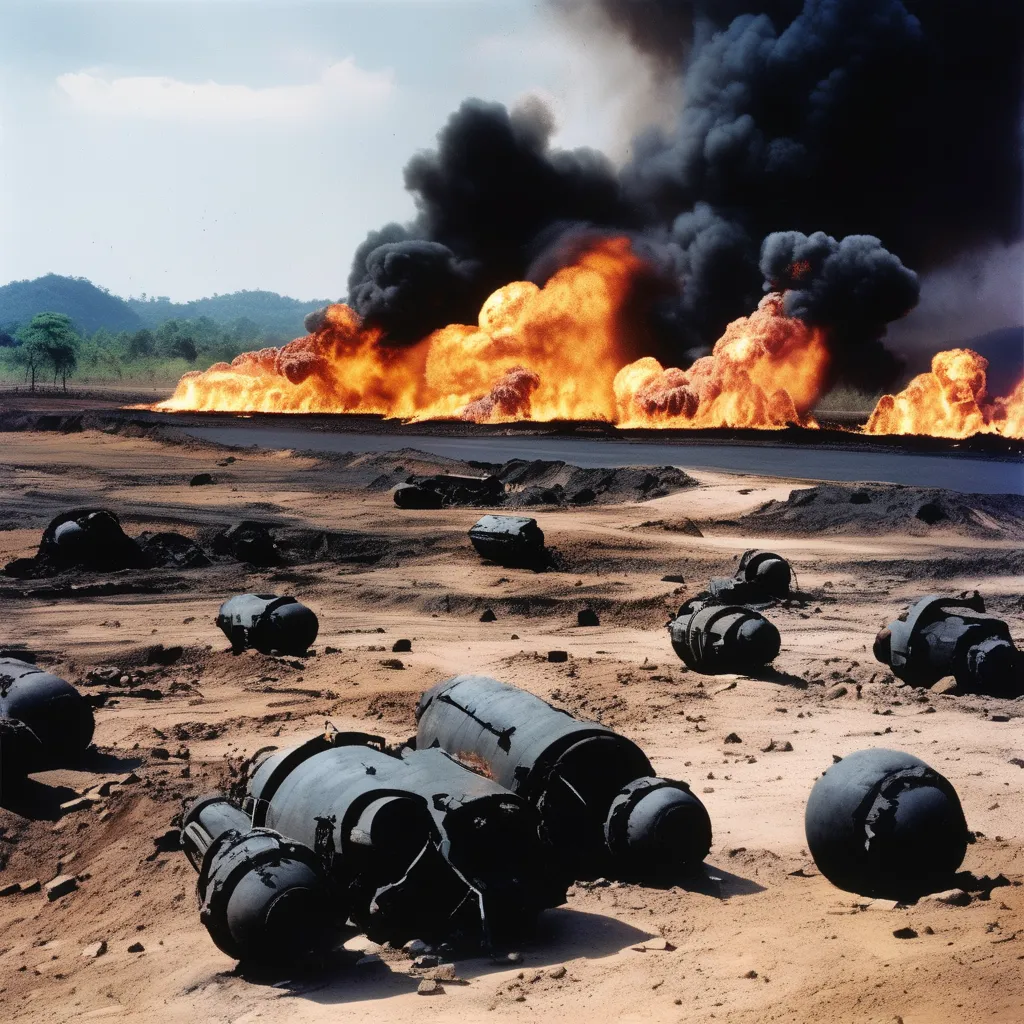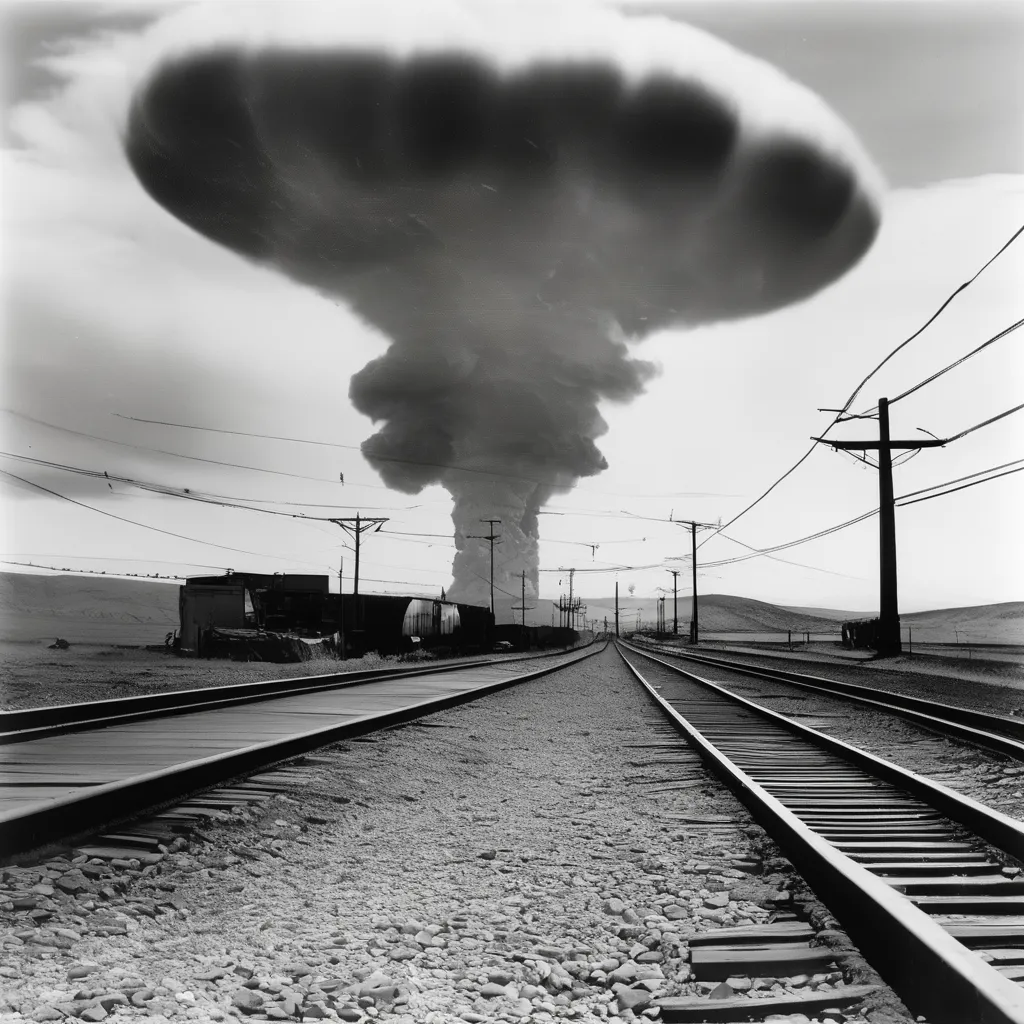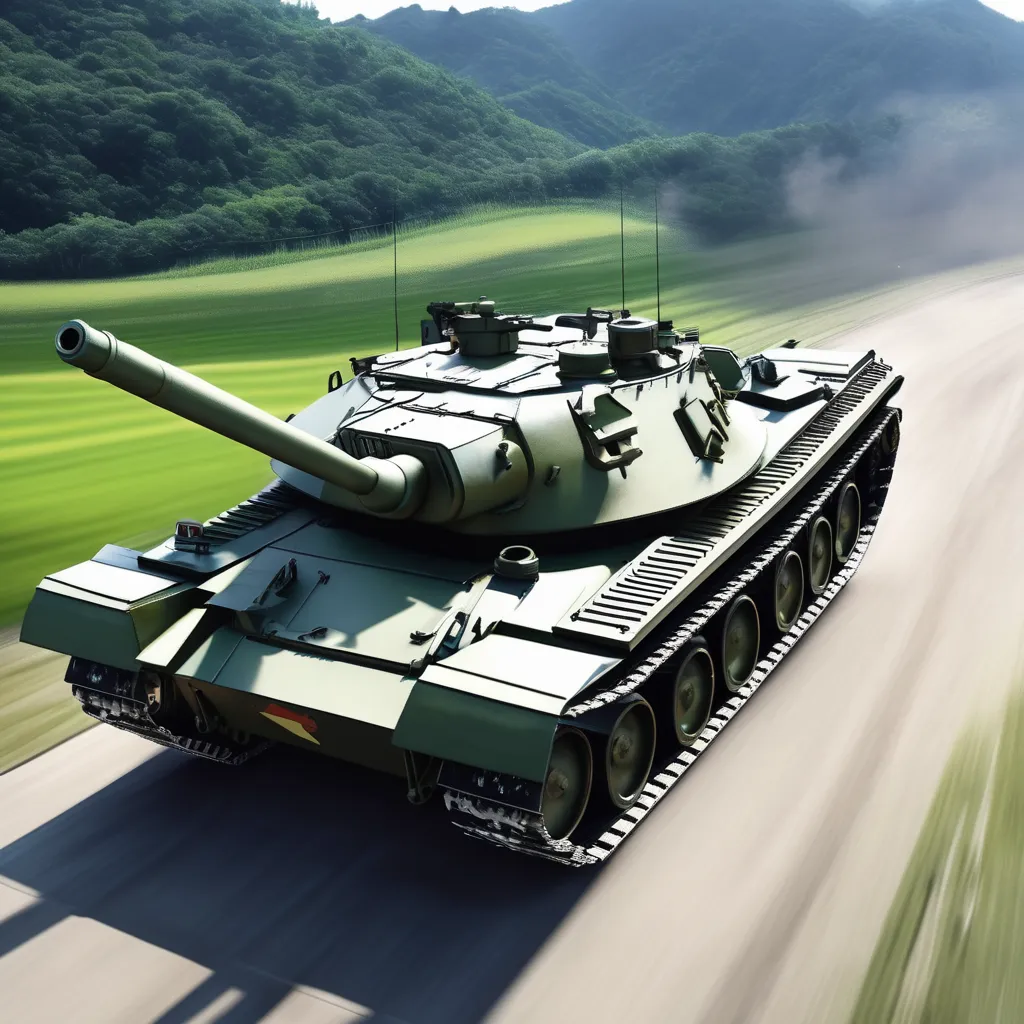ITEACH.TOP | LEARN EVERYTHING
Introduction of Napalm Bomb and Its Destructive Effects
The development and deployment of napalm bombs have raised significant controversy and debate throughout history. Not only do these incendiary weapons showcase the stark realities of modern warfare, but they also underline the broader ethical and environmental implications of using such devastating tools. As we delve into the comprehensive examination of napalm bombs, this article aims to provide a multi-faceted understanding from historical, chemical, tactical, and humanitarian perspectives.
Understanding Napalm: A Historical Overview
Napalm bombs have a unique place in the annals of military history. Originally designed for tactical efficiency, they have been employed in several major conflicts, most notably in World War II, the Korean War, and the Vietnam War. The term “napalm” is derived from the combination of two words: “naphthenic” and “palmitic” acids, which are components of the original formulation.
The usage of napalm has often been surrounded by controversy due to its destructive capacity. Its deployment has resulted in severe destruction, both immediate and long-term, causing extensive damage to both military targets and civilian infrastructure. This dual-edged sword nature of napalm has made it a subject of intense scrutiny and debate in both political and military circles.
Understanding the historical background of napalm requires acknowledging its dual role as a weapon of war and a tool for psychological warfare. Its ability to cause fear and widespread devastation has made it a strategic element in military operations, while also raising ethical questions about its use in populated areas.
Origins and Development of Napalm Bombs
Napalm was first developed during World War II by a team of chemists at Harvard University led by Louis Fieser. The goal was to create a more effective incendiary agent that could stick to targets and cause prolonged burning. The subsequent success of this development saw its quick adoption by the military for use in various theaters of war.
The initial formulation of napalm consisted primarily of naphthenic and palmitic acids, which were mixed with gasoline to produce a thick, sticky substance that could adhere to surfaces and ignite with intense heat. This innovation marked a significant leap in incendiary weapon technology, as it allowed for more controlled and extensive damage than previous devices.
As the technology evolved, so did the formulations. By the time of the Vietnam War, a more advanced version called “Napalm-B” had been developed, which included polystyrene and benzene, making it even more effective and harder to extinguish. This evolution underscores the persistent drive to enhance the efficiency of incendiary weapons, often with tragic consequences.
The Chemistry Behind Napalm: Composition and Properties
Napalm’s devastating effectiveness lies in its unique chemical composition. Originally, napalm was a mixture of a gelling agent and a volatile petrochemical like gasoline. This combination created a substance that was not only highly flammable but also capable of adhering to surfaces, thereby ensuring prolonged burning.
The refined versions of napalm, such as Napalm-B, incorporated additional components like polystyrene and benzene to create an even more stable and viscous compound. Polystyrene helped the napalm to gel more effectively, ensuring that it stuck to surfaces, while benzene increased its combustion temperature. This combination made Napalm-B significantly more destructive than its predecessors.
From a chemical standpoint, the properties of napalm make it an ideal incendiary agent for creating widespread fires and destruction. Its high combustion temperature and ability to spread quickly across surfaces ensure that it can cause maximum damage in a short period, making it a formidable weapon in a wartime context.
Napalm Bomb Deployment in World War II
The first large-scale use of napalm bombs occurred during World War II. Initially utilized by the Allies, napalm bombs played a crucial role in many of the strategic bombing campaigns aimed at weakening Axis powers. One of the most notable uses was during the firebombing of Tokyo in 1945, where napalm bombs inflicted catastrophic damage.
During these operations, napalm bombs were used to target industrial areas, transportation networks, and residential zones. The destructive capability of napalm was evident as entire blocks were reduced to ashes, contributing significantly to the war’s destructive toll. The weapon’s dual capacity to inflict material damage and psychological terror on civilian populations underscored its tactical value.
The success of napalm in World War II’s incendiary campaigns laid the groundwork for its use in future conflicts. However, it also initiated the ongoing debate about the morality and ethical implications of its use, particularly against non-combatant populations.
The Use of Napalm in the Korean War
The Korean War marked the resurgence of napalm bombs as critical tools in the United States’ combat strategy. Napalm was extensively used to support ground forces, disrupt enemy supply lines, and decimate entrenched positions. This conflict demonstrated the weapon’s utility in a new geographical and tactical context.
One of the key roles of napalm in Korea was its effectiveness against fortified positions and personnel. By deploying napalm bombs from aircraft, U.S. forces were able to neutralize enemy bunkers and caves, thereby weakening the North Korean and Chinese military capabilities. This use of napalm proved instrumental in numerous engagements throughout the war.
Despite its tactical advantages, the deployment of napalm in Korea also sparked significant controversy. Reports of civilian casualties and widespread destruction of infrastructure raised ethical and humanitarian questions. These concerns would later intensify during the Vietnam War, further fueling the global debate over the use of incendiary weapons.
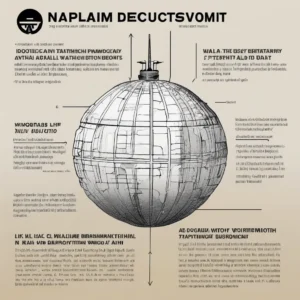
Napalm Bombs and the Vietnam War: A Detailed Analysis
The Vietnam War saw the most extensive use of napalm bombs, bringing the weapon into the global spotlight and raising unprecedented ethical concerns. During this conflict, napalm was used not only for tactical purposes but also in attempts to demoralize and destabilize both the North Vietnamese Army and the Viet Cong.
From a tactical standpoint, napalm was used extensively in “Operation Rolling Thunder,” a sustained bombing campaign aimed at weakening North Vietnam’s infrastructure and war capability. This operation highlighted napalm’s destructive power, as it was deployed to incinerate forests, destroy supply routes, and target enemy troops. Its effectiveness in creating clear landing zones for helicopters was also notable.
The Vietnam War also exposed the dark side of napalm use. Graphic images and reports of burned civilians, including children, captured global attention and led to widespread condemnation. The war’s brutal application of napalm became a symbol of the conflict’s inhumanity, intensifying protests and calls for the re-evaluation of incendiary weapons in modern warfare.
The Mechanics of Napalm Bomb Detonation
The detonation of a napalm bomb involves several stages that collectively create its devastating effects. Upon release from an aircraft, the bomb’s design ensures it arrives at the target with enough force to rupture its casing and spread the napalm mixture over a wide area. A triggering mechanism then ignites the flammable gel, leading to immediate and wide-reaching fires.
The initial explosion disperses the napalm, which sticks to surfaces and continues to burn intensely. The high-temperature flames produced by napalm can melt through materials, cause severe burns, and ignite surrounding objects. The thick, gelatinous nature of the substance ensures that burning fragments adhere to surfaces, making extinguishment almost impossible.
These mechanics not only ensure the immediate effectiveness of the weapon but also prolong the destructive impacts. The visual and physical devastation that follows a napalm bomb detonation serves both to incapacitate military targets and to instill fear in enemy forces and civilian populations alike.
Immediate Effects of Napalm Bomb Explosions
The immediate effects of a napalm bomb explosion are harrowing. Upon detonation, the napalm gel spreads outwards, sticking to objects and combusting at extremely high temperatures. This results in intense fires that can incinerate structures, vehicles, and exposed personnel within moments.
In addition to the physical destruction, the immediate thermal effects are catastrophic for human beings caught in the vicinity. The high heat causes severe burns, often resulting in instantaneous fatalities or excruciating injuries. The thick smoke produced can also lead to asphyxiation, adding to the lethality of the initial blast.
The visual and sensory impact of a napalm bomb explosion is equally profound. The sight of raging fires and black smoke contributes to a psychological terror that affects both combatants and civilians. This immediate, overwhelming destruction underscores the formidable and terrifying nature of napalm as a weapon.
Long-term Environmental Impact of Napalm Bombs
While the immediate effects of napalm bombs are devastating, the long-term environmental impacts are equally concerning. Napalm bombs leave behind vast swathes of scorched earth, rendering land barren and unsuitable for agriculture or habitation. The residual chemicals can seep into the soil and water, causing prolonged contamination and environmental degradation.
Forests and natural habitats suffer immensely from napalm bombings. The widespread fires can decimate entire ecosystems, leading to loss of biodiversity and disruption of ecological balance. Animals caught in the aftermath often suffer horrific injuries or death, further compounding the long-term environmental toll.
These environmental impacts persist long after the conflict has ended, affecting generations to come. The lasting scars on the landscape and ecosystems serve as somber reminders of the destructive power of napalm, highlighting the broader, far-reaching consequences of its use in warfare.
Psychological Effects of Napalm Bombs on Civilians and Soldiers
The psychological effects of napalm bombs are as devastating as their physical impacts. For civilians, the sheer terror associated with napalm bombings can lead to long-lasting trauma. The fear of an unexpected and inescapable inferno causes profound psychological distress, which can manifest in post-traumatic stress disorder (PTSD), anxiety, and depression.
Soldiers exposed to napalm’s destructive power often carry similar psychological scars. The experience of witnessing the carnage and suffering caused by napalm can lead to severe emotional and mental health issues, including combat stress and PTSD. The moral and ethical dilemmas associated with deploying such a weapon further complicate the psychological burden on military personnel.
The sight of burning environments and the screams of victims can haunt both civilians and soldiers for years, if not lifetimes. The psychological terror inflicted by napalm extends well beyond the battlefield, leaving deep, invisible wounds that affect communities and individuals alike.
Evaluating the Tactical Efficacy of Napalm Bombs in Warfare
In terms of tactical efficacy, napalm bombs have proven to be both effective and controversial tools in warfare. On the battlefield, napalm bombs offer a strategic advantage by incapacitating enemy forces and destroying fortified positions. Their ability to clear wide areas and create landing zones has also been advantageous in specific military operations.
Napalm’s psychological impact further enhances its tactical value. The fear and demoralization it instills in enemy combatants can disrupt operational effectiveness and lower morale. The mere threat of napalm deployment can cause enemy forces to abandon positions, contributing to strategic goals without direct confrontation.
However, the tactical benefits of napalm are weighed against significant ethical and humanitarian costs. The indiscriminate nature of its destruction often results in civilian casualties and extensive collateral damage. This dual-edged sword nature challenges military leaders to balance tactical efficacy with broader ethical considerations, making the use of napalm a contentious issue.
Legal and Ethical Concerns Surrounding Napalm Usage
The use of napalm bombs raises numerous legal and ethical concerns. International humanitarian law dictates that weapons should distinguish between combatants and civilians, an aspect in which napalm often fails. The widespread and indiscriminate nature of its destruction frequently results in civilian casualties, violating principles of proportionality and distinction in warfare.
Ethical concerns also revolve around the inhumane suffering caused by napalm. The severe burns and prolonged agony inflicted upon victims, especially non-combatants, raise moral questions about the acceptability of such a weapon in modern conflict. These ethical dilemmas have been a focal point of anti-war and human rights campaigns, fueling calls for the prohibition of napalm use.
The legal framework surrounding napalm has evolved to reflect these concerns. Various international treaties and protocols, such as the Geneva Conventions and the Convention on Certain Conventional Weapons (CCW), have sought to restrict or ban the use of incendiary weapons like napalm. This legal landscape underscores the growing global consensus on the need for stringent regulation and ethical considerations in warfare.
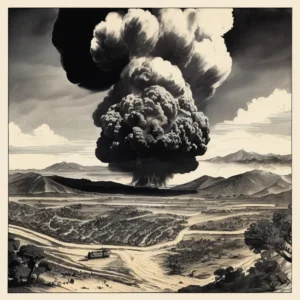
International Regulation and Ban of Napalm Weapons
Recognizing the severe humanitarian and environmental impact of napalm, the international community has taken steps towards regulating and banning its use. The 1980 United Nations Convention on Certain Conventional Weapons (CCW) addressed the issue of incendiary weapons, including napalm, by imposing restrictions on their use, particularly in civilian areas.
The CCW’s Protocol III specifically targets incendiary weapons, prohibiting their use against civilian populations and restricting their deployment even in military operations where civilian presence is a factor. This protocol represents a significant legal instrument aimed at curbing the indiscriminate destruction caused by napalm bombs.
Despite these efforts, the enforcement and compliance with international regulations remain challenging. While many nations have endorsed the CCW, some major military powers have not fully committed to the restrictions, highlighting the complexities of achieving global ban enforcement. Continued advocacy and diplomatic efforts are crucial to strengthening the international legal framework against incendiary weapons like napalm.
Survivor Accounts: Personal Stories from Napalm Bomb Attacks
Survivor accounts of napalm bomb attacks offer intimate and harrowing glimpses into the weapon’s human impact. These personal stories often describe unimaginable suffering and trauma, shedding light on the true cost of napalm’s deployment. For many survivors, the physical and psychological scars from napalm burns are lifelong burdens.
Civilians who have endured napalm bombings recount the chaos and horror of the immediate aftermath. Many describe the excruciating pain of severe burns, the struggle for medical care, and the long, painful journey to recovery. These stories emphasize the indiscriminate nature of napalm’s destruction and the profound toll on non-combatant lives.
Soldiers exposed to napalm also share poignant narratives of their experiences. The moral and ethical weight of using such a devastating weapon, coupled with witnessing its effects firsthand, leaves lasting impressions. These personal accounts highlight the deep, multifaceted impact of napalm bombings on both the physical and mental well-being of survivors.
Medical Treatment and Rehabilitation for Napalm Burn Victims
The medical treatment and rehabilitation of napalm burn victims require specialized and intensive care. Due to the severity of the burns caused by napalm, immediate medical intervention is crucial. This often involves extensive debridement, skin grafts, and long-term wound management to prevent infections and promote healing.
Rehabilitation encompasses both physical and psychological support. Physical therapy plays a vital role in helping victims regain mobility and function, while counseling and psychiatric care address the mental health impacts, such as PTSD and depression. Comprehensive rehabilitation programs are essential for helping survivors rebuild their lives.
Despite advancements in medical care, the journey to recovery for napalm burn victims is often arduous and lifelong. Concerted efforts from medical practitioners, humanitarian organizations, and support groups are vital in providing the necessary care and resources. These efforts underscore the enduring human cost of napalm bombings and the imperative for continued support and advocacy for victims.
Technological Advances in Modern Incendiary Weapons
Technological advancements have led to the development of more sophisticated and varied incendiary weapons beyond traditional napalm. Modern incendiaries utilize advanced materials and delivery systems, resulting in weapons that are more controlled and potentially more devastating. Innovations include thermite and magnesium-based devices, which offer superior burning characteristics and versatility.
Advancements in precision targeting have also influence incendiary weapon deployment. Modern delivery systems use advanced guidance technology to accurately target specific military objectives while theoretically minimizing collateral damage. These improvements reflect ongoing efforts to enhance tactical efficacy while adhering to international legal and ethical standards.
However, the development of new incendiary weapons brings with it fresh ethical and regulatory challenges. Ensuring these technologies are used responsibly and comply with international humanitarian laws is critical. As the nature of warfare evolves, so too must the frameworks governing the use and oversight of such potent weapons.
Comparative Analysis: Napalm vs. Other Incendiary Devices
Comparing napalm with other incendiary devices reveals both similarities and distinctions in their application and effects. While napalm is renowned for its sticky, gel-like composition and intense burning capabilities, other incendiaries, such as thermite and phosphorous, offer different tactical advantages and properties.
Thermite, for instance, generates extremely high temperatures upon ignition, making it effective for destroying metal structures and equipment. Unlike napalm, it does not adhere to surfaces, which can make it more suitable for specific industrial and tactical applications without causing widespread fire damage.
Phosphorous-based weapons, like white phosphorus, produce thick smoke and high-intensity flames. They are often used for signaling, screening, and incendiary purposes. While they share some characteristics with napalm in terms of producing severe burns and fires, their primary tactical uses and properties differ.
Understanding these distinctions helps in comprehending the strategic choices made in deploying different incendiary devices. Each weapon’s unique characteristics make it suitable for specific scenarios, shaping the broader discourse on their use and regulation in conflict settings.
Educational Resources on the History and Impact of Napalm
Education on the history and impact of napalm is vital for fostering a nuanced understanding of this controversial weapon. Several academic and historical resources offer in-depth analyses of napalm’s development, deployment, and consequences. Engaging with these materials provides valuable insights into the complex interplay of science, ethics, and warfare.
Prominent resource types include scholarly articles, historical documentaries, and survivor memoirs. These sources cover various aspects, from detailed technical assessments of napalm’s chemical properties to personal accounts of those affected by its use. Educational institutions also offer specialized courses and lectures exploring the broader implications of incendiary weaponry.
Access to comprehensive educational resources empowers individuals to critically evaluate the multifaceted issues surrounding napalm. By fostering informed discourse, these resources contribute to a more ethical and conscientious approach to understanding and regulating military technologies in the future.
Case Studies: Napalm Bomb Attacks in Historical Conflicts
Examining case studies of napalm bomb attacks in historical conflicts provides concrete examples of the weapon’s application and impact. These case studies highlight specific instances of napalm use, offering detailed accounts of the tactical, humanitarian, and environmental consequences.
One notable case study is the firebombing of Tokyo during World War II, where napalm bombs played a pivotal role in generating widespread destruction. This operation demonstrated napalm’s capability to decimate urban areas, resulting in significant civilian casualties and infrastructural damage.
Another critical case study is the extensive use of napalm during the Vietnam War. Operations such as “Operation Rolling Thunder” showcased napalm’s tactical utility but also its devastating effects on civilian populations and ecosystems. These instances emphasize the dual-edged nature of napalm as both a potent military tool and a source of profound ethical dilemmas.
Analyzing these case studies provides valuable lessons for understanding the broader implications of incendiary weapons in warfare. They underscore the need for careful consideration and comprehensive regulation to mitigate the catastrophic consequences of such technologies.

Future Perspectives on the Use and Prohibition of Incendiary Weapons
The future of incendiary weapons like napalm hinges on ongoing technological, ethical, and legal developments. Advances in precision targeting and weapon design may offer ways to minimize collateral damage while maintaining tactical efficacy. However, the broader ethical and humanitarian concerns associated with incendiary weapons persist.
Future perspectives must consider the evolving nature of warfare, where the focus increasingly shifts towards compliance with international humanitarian law and the protection of civilian populations. Strengthening global treaties and ensuring robust enforcement mechanisms are critical steps toward the prohibition and regulation of incendiary weapons.
Ultimately, the balance between military necessity and humanitarian principles will shape the future use of incendiaries. Continued dialogue among policymakers, military leaders, and ethicists is essential in navigating these complex issues, striving for a world where the devastating impact of weapons like napalm is consigned to history.
The examination of napalm bombs exposes the multifaceted challenges they present in terms of tactical utility, ethical implications, and long-term
